Levator Scapulae Muscle
Anatomy of Levator Scapulae Muscle
The levator scapulae muscle are superficial extrinsic muscles of the back that primarily function to elevate the scapulae.
Levator comes from the Latin levare, meaning “to raise.” Scapulae refer to the scapulas, or shoulder blades, possibly originating from the Greek “skaptein,” meaning “to dig.”
In conjunction with other posterior axial-appendicular muscles, the levator scapulae can inferiorly rotate the glenoid cavity as well as extend and laterally flex the neck.
The levator scapulae also serve a role in connecting the axial skeleton with the superior appendicular skeleton.
The levator scapulae can have involvement in numerous pathologies, including snapping scapula syndrome, levator scapulae syndrome, Sprengel deformity, cervical myofascial pain, and fibromyalgia.
Levator scapulae muscle Origin :
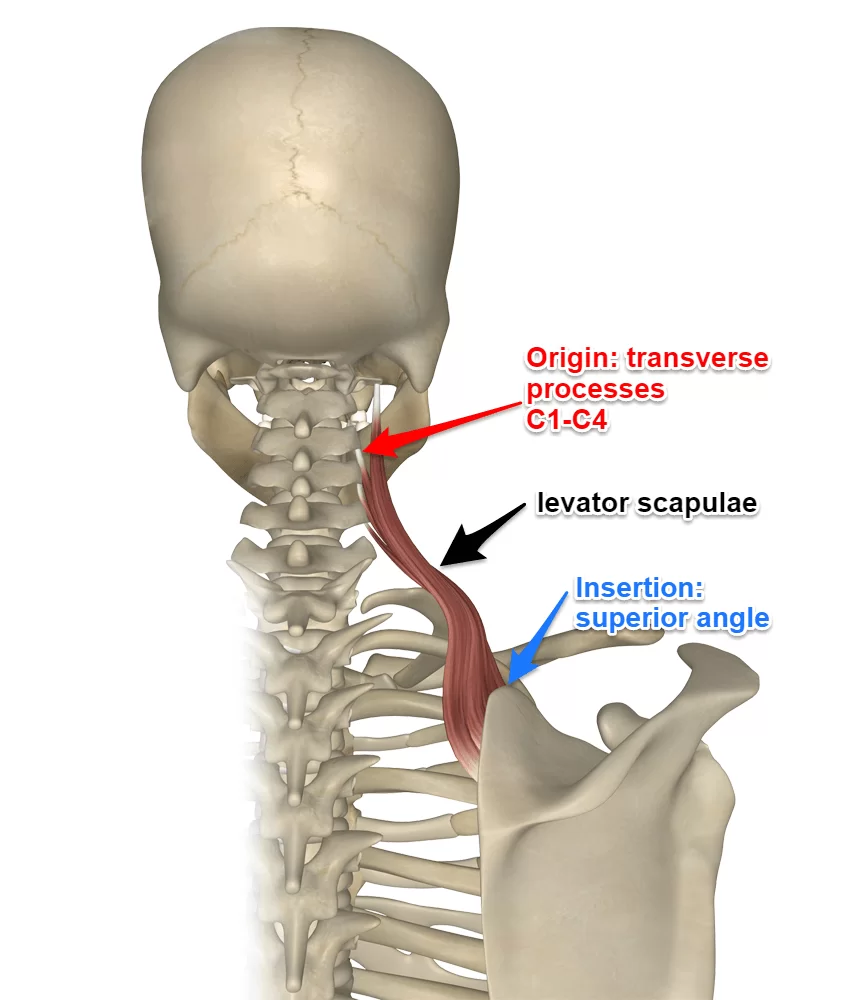
- The levator scapulae originates on the posterior tubercle of transverse process of cervical vertebrae 1 to 4.
Insertion:
- The levator scapulae inserts on to the vertebral margin of the scapula between the superior angle and the root of the spine.
Levator scapulae muscle Position :
- The superior third of the strap-like levator scapulae lies deep to the sternocleidomastoid while the inferior third is deep to the trapezius.
- From the transverse processes of the upper cervical vertebrae, the fibers of the levator of the scapula pass inferiorly to the superomedial border of the scapula.
Innervation:
- The levator scapulae muscle is innervated by the anterior rami of spinal nerves C3 and C4 and the dorsal scapular nerve (C5), a branch of the brachial plexus.
Relations:
- Levator scapulae occupy the superficial layer of the superficial (extrinsic) back muscles.
- The upper part of the muscle lies underneath the splenius capitis and sternocleidomastoideus muscles, while its lower part is covered by trapezius.
- Only the middle part of the levator scapulae remains uncovered. For that reason, the muscle can be most easily palpated in this area.
- The middle part helps to form the floor of the posterior triangle of the neck.
Blood Supply and Lymphatics:
Dorsal Scapular Artery :
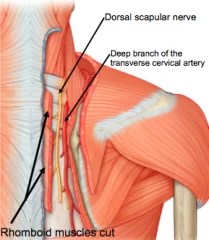
- The dorsal scapular artery is the predominate blood supply of the levator scapulae muscle. The origin is currently in dispute in the literature.
- The origin most frequently cited is from the subclavian artery, with the second most common being a branch of the thyrocervical trunk.
- The transverse cervical artery, a branch of the thyrocervical trunk, divides into the superior and deep branches at the level of the levator scapulae.
- The deep branch of the transverse cervical artery is also known as the dorsal scapular artery.
Anatomic Variation :
- Anatomic variation of the subclavian artery has implications in failed supraclavicular brachial plexus blocks.
- Supraclavicular brachial plexus blocks are useful for analgesia and anesthesia of the upper limb. Kohli et al.
- present a case of a variant branch of the subclavian artery visualized on ultrasound, which they hypothesize could be the dorsal scapular artery, passing through the brachial plexus nerve bundle.
Lymphatics:
- The shoulder blade is associated with the axillary and supraclavicular lymph nodes.
- The lymph nodes from the right scapula drain into the right lymphatic duct. The left scapula drains directly into the thoracic duct.
Nerves:
- Dorsal Scapular Nerve :
- The innervation of the levator scapulae is typically from the dorsal scapular nerve, or DSN, originating from the C4 and C5 nerve roots.
- This nerve also provides motor innervation to the rhomboids.
- The DSN arises from the anterior rami of C5 root, from the upper brachial plexus, and traditionally is the first nerve branch off of the C5 root. Innervation can also be from cervical nerves (C3, C4) via the cervical plexus.
Structure:
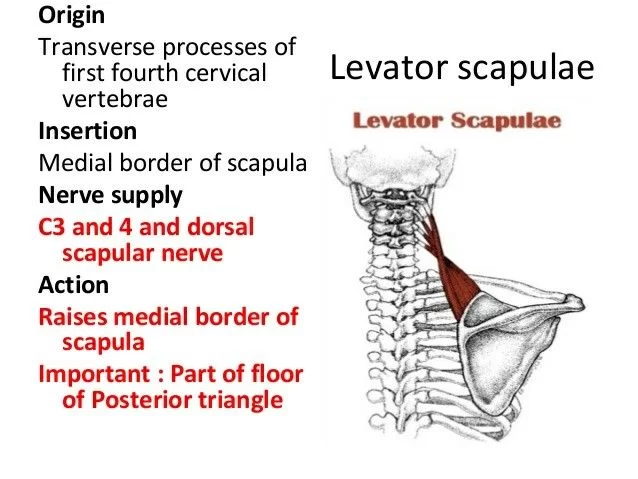
- The levator scapulae originates from the posterior tubercle of the transverse process of cervical vertebrae one to four.
- The muscle is inserted into medial border of the scapula extending from superior angle to junction of spine and medial border of scapula.
- The levator scapulae may lie deep to the Sternocleidomastoid at its origin, deep or adjacent to the splenius capitis at its origin and mid-portion, and deep to the trapezius in its lower portion.
Levator scapulae muscle Variation
- The number of attachments varies, a slip may extend to the occipital or mastoid, to the trapezius, scalene or serratus anterior, or to the first or second rib.
- The muscle may be subdivided into several distinct parts from origin to insertion.
- Levator claviculae from the transverse processes of one or two upper cervical vertebræ to the outer end of the clavicle corresponds to a muscle of lower animals.
- More or less union with the serratus anterior muscle.
Levator scapulae muscle Function:
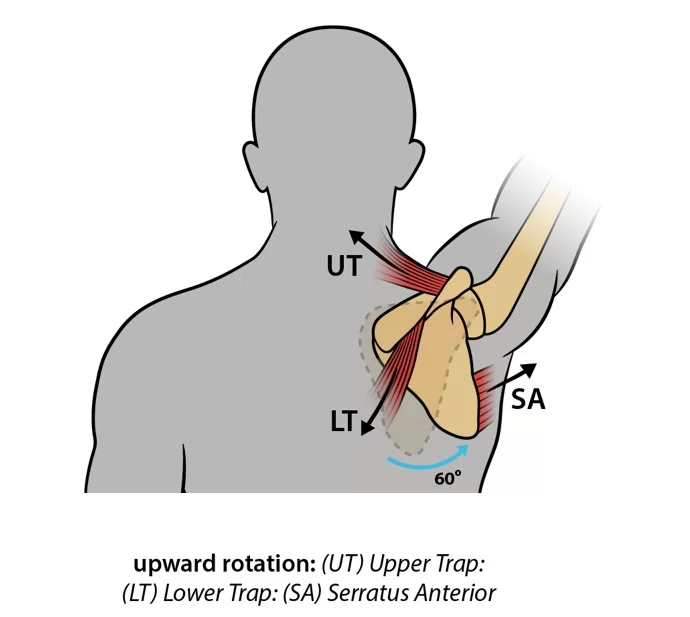
- The main function of the levator scapulae muscle is to elevate and retract the shoulder girdle at the scapulothoracic joint.
- At the same time, it helps in preventing the depression of the girdle when carrying heavy loads.
- The muscle participates in the stabilization of the scapula and the inferior rotation of the glenoid cavity.
- When acting on the cervical joints, unilateral contraction of the muscle produces ipsilateral flexion of the neck, while bilateral contraction contributes to extension of the neck.
- The actions of levator scapulae are facilitated by actions of the trapezius, latissimus dorsi, rhomboids, pectoralis major and minor muscles.
Clinical Importance:
- Forward head posture puts increased tension on the levator scapulae muscles to co-contract for cervical extension in an elongated position.
- Increased tightness in the levator scapulae due to increased activity from a forward head posture can lead to cervicogenic headaches.
Levator Scapulae Syndrome :
- The most common clinical manifestation of levator scapulae pathology is levator scapulae syndrome or tenderness over the upper medial angle of the scapula.
- Though well documented, this condition is often unrecognized. Movements that stretch the muscle tend to exaggerate symptoms.
- There is a hypothesis that constant trigger points, crepitation, and increased heat emission result from a combination of anatomic variability and the confluence of a bursa between the insertion of the levator scapulae, origin serratus anterior, and the scapula.
- Effective treatment modalities include physical therapy and/or local corticosteroid injections.
FAQs
What is the levator scapulae?
Levator scapulae is a posterior Axio-appenducular muscle located in the posterior triangle of the neck that links the upper limb to the vertebral column. The superior aspect of the levator scapulae is protected by the sternocleidomastoid, whereas the inferior portion is protected by the trapezius.
What is the origin and insertion of the levator muscle?
The levator scapulae is a thin skeletal muscle located behind and to the side of the neck. It arises from the transverse processes of the four topmost cervical vertebrae and attaches onto the upper section of the scapular medial border.
Why is it called levator scapulae?
The name levator comes from the Latin word levare, which means “to raise,” and scapula meaning “shoulder.” The dorsal scapular nerve innervates the levator scapulae, which allows it to contract.
What nerve controls the levator scapulae?
dorsal scapular nerve
According to a 2016 cadaver research, the levator scapulae was alone innervated by the dorsal scapular nerve in 48% of instances, while the levator scapulae and rhomboids were both innervated the dorsal scapular nerve in 52%.
What is a levator scapulae weakness?
Levator scapulae muscle weakness occurs mostly due to Poor posture – hunched positions can overstretch and strain the levator scapulae muscles. Cervical spine dysfunction, injuries to the neck or upper spinal column, and nearby structures can also lead to muscle pain with levator scapulae weakness.

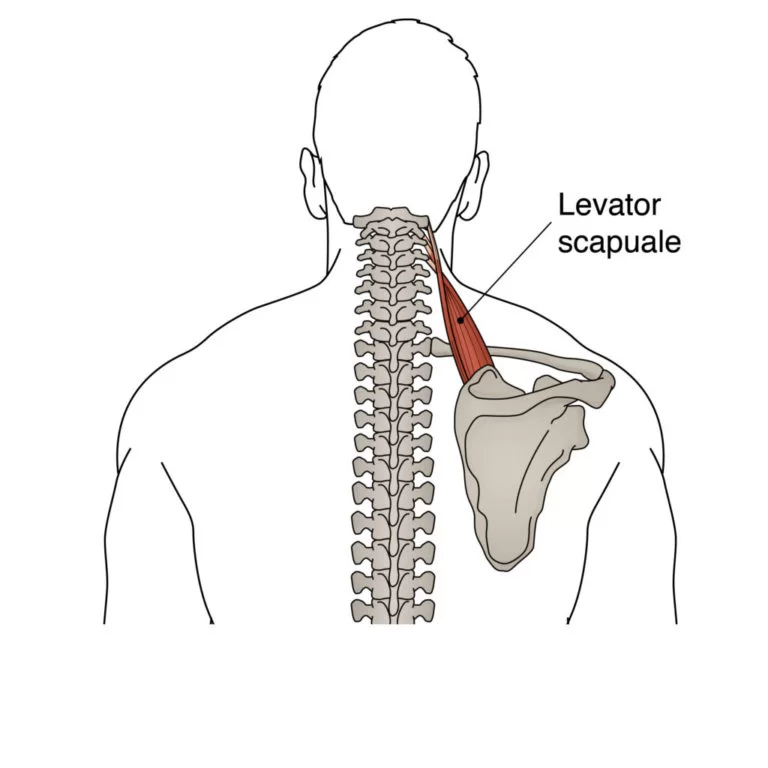


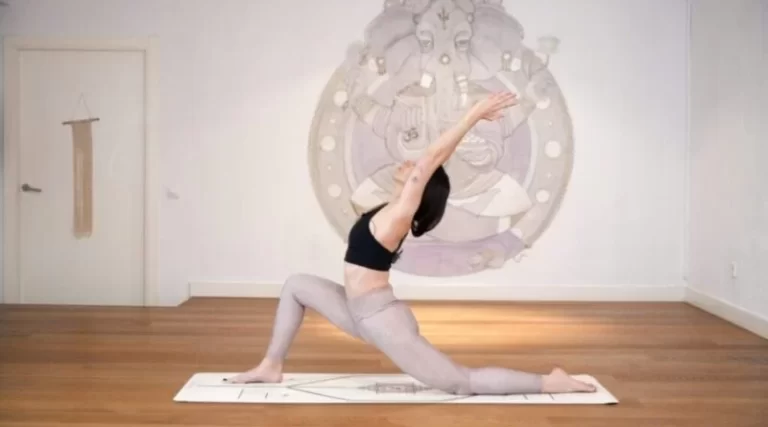
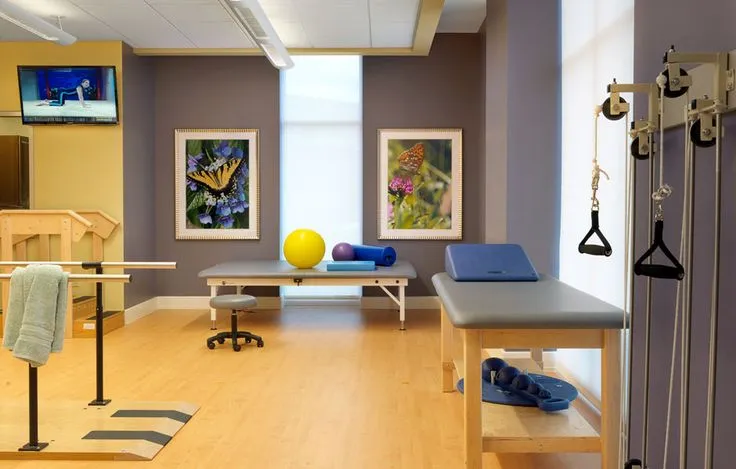
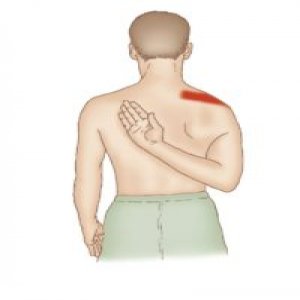
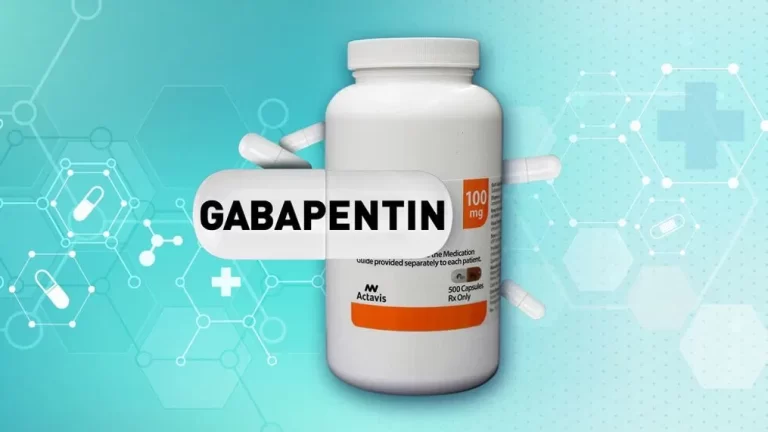
7 Comments